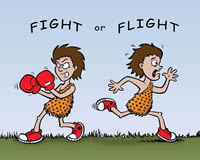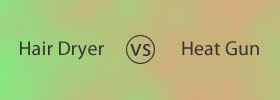Difference between Sympathetic and Parasympathetic
Key difference: The main purpose of the SNS is to activate the response of the body during stressful situations, including the fight-or-flight mechanism of the body. The parasympathetic nervous system is responsible for stimulation of "rest-and-digest" or "feed and breed" activities that occur when the body is at rest.

Both the sympathetic nervous system (SNS) and parasympathetic nervous system (PSNS, or occasionally PNS) are part of the autonomic nervous system (ANS or visceral nervous system or involuntary nervous system). The ANS is responsible for involuntary functions that occur in our body unconsciously, such as respiration, circulation, digestion, urination, and reproduction. Hence, the ANS innervates (another word for supply organs with nerves) to eyes, lungs, kidneys, gastrointestinal tract, heart, etc.
The ANS and hence both the SNS and the PSNS play an important role in maintaining homeostasis in the body, especially during stressful conditions such as sickness and starvation. The parasympathetic and sympathetic nervous system are opposite systems that operate independently in some functions but act in collaboration to control some physiological functions.
The sympathetic nervous system is one of the three parts of the ANS. The main purpose of the SNS is to activate the response of the body during stressful situations, including the fight-or-flight mechanism of the body. It is also responsible for regulating many homeostatic mechanisms in the body. SNS is essentially responsible for helping the body to get ready for action, or incase action is not an option, for fleeing. It dilates the pupil, so one can see better especially in the dark, it increases heart rate, so that one may have better circulation of oxygen to the muscles, decreases digestion, so that the energy be better utilized for fighting, and so on.
Examples of SNS action on various organs:
- Eye: Dilates pupil
- Heart: Increases rate and force of contraction
- Lungs: Dilates bronchioles
- Blood Vessels: Constricts
- Sweat Glands: Activates sweat secretion
- Digestive tract: Inhibits peristalsis
- Kidney: Increases renin secretion
- Penis: Promotes ejaculation
 The parasympathetic nervous system is one of the three parts of the ANS. It is responsible for stimulation of "rest-and-digest" or "feed and breed" activities that occur when the body is at rest. These activities include sexual arousal, salivation, tearing up, urination, digestion, and defecation.
The parasympathetic nervous system is one of the three parts of the ANS. It is responsible for stimulation of "rest-and-digest" or "feed and breed" activities that occur when the body is at rest. These activities include sexual arousal, salivation, tearing up, urination, digestion, and defecation.
The SNS and the PSNS work opposite each other, for example, one increases the heart rate, while the other decreases it. However, these systems work complementary to each other, as one raises heart beat when required, while the other decreases it when the work is done and the increased heart beat is no longer required. The opposing functions of the parasympathetic and sympathetic nervous system explain why a person cannot urinate, defecate, or digest properly when encountering stressful situations. The SNS typically functions in actions requiring quick responses, whereas the PSNS functions with actions that do not require immediate reaction.
A detailed comparison between the sympathetic nervous system and parasympathetic nervous system:
|
|
Sympathetic |
Parasympathetic |
|
Part of |
Autonomic Nervous System |
Autonomic Nervous System |
|
Nerve origination |
The lumbar and thoracic regions |
The midbrain, hindbrain and sacral region |
|
Nerves |
Short postsynaptic nerves located near or on the organs |
Long postsynaptic nerves that synapse at a distance from the organs |
|
Neurotransmitter |
Norepinephrine |
Acetylcholine |
|
Innervates |
Eyes, lungs, kidneys, gastrointestinal tract, heart, etc. |
Eyes, lungs, kidneys, gastrointestinal tract, heart, etc. |
|
Purpose |
Mediate involuntary responses, such as “fight or flight” |
Mediate vegetative functions, controls feeding, breeding, and resting functions. |
|
Function |
Allows the body to adjust in stressful situations, such as arousing excitement, fear, anger, and embarrassment, increases the heart rate, thus, causing an increase in the blood pressure, dilates the respiratory bronchioles to increase uptake of oxygen, decreases gallbladder secretions and dilates blood vessels to increase blood supply to the skeletal muscles. |
Constriction of pupils, decreases the heart rate, thus, causing a drop in the blood pressure, stimulation of digestive glands, stimulation of secretion of saliva, stimulates the processes of urination and defecation, and constricts the bronchi and thus, decreasing the diameter of airway, |
Image Courtesy: bufferingbrain.blogspot.in, sandiegofengshuiblog.wordpress.com









Comments
Barnalee
Mon, 08/28/2017 - 20:03
nyc article
pesh
Mon, 05/25/2015 - 01:17
gud article
king of d king
Mon, 09/15/2014 - 18:02
nice article
ShafiUllag
Thu, 06/19/2014 - 11:37
Add new comment